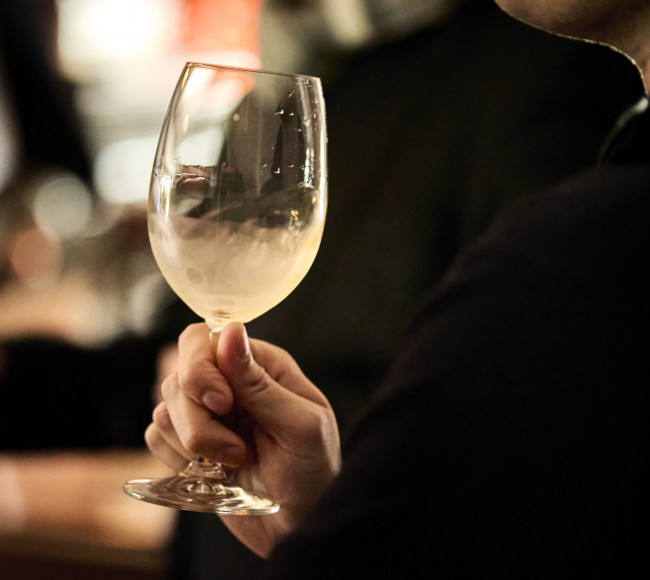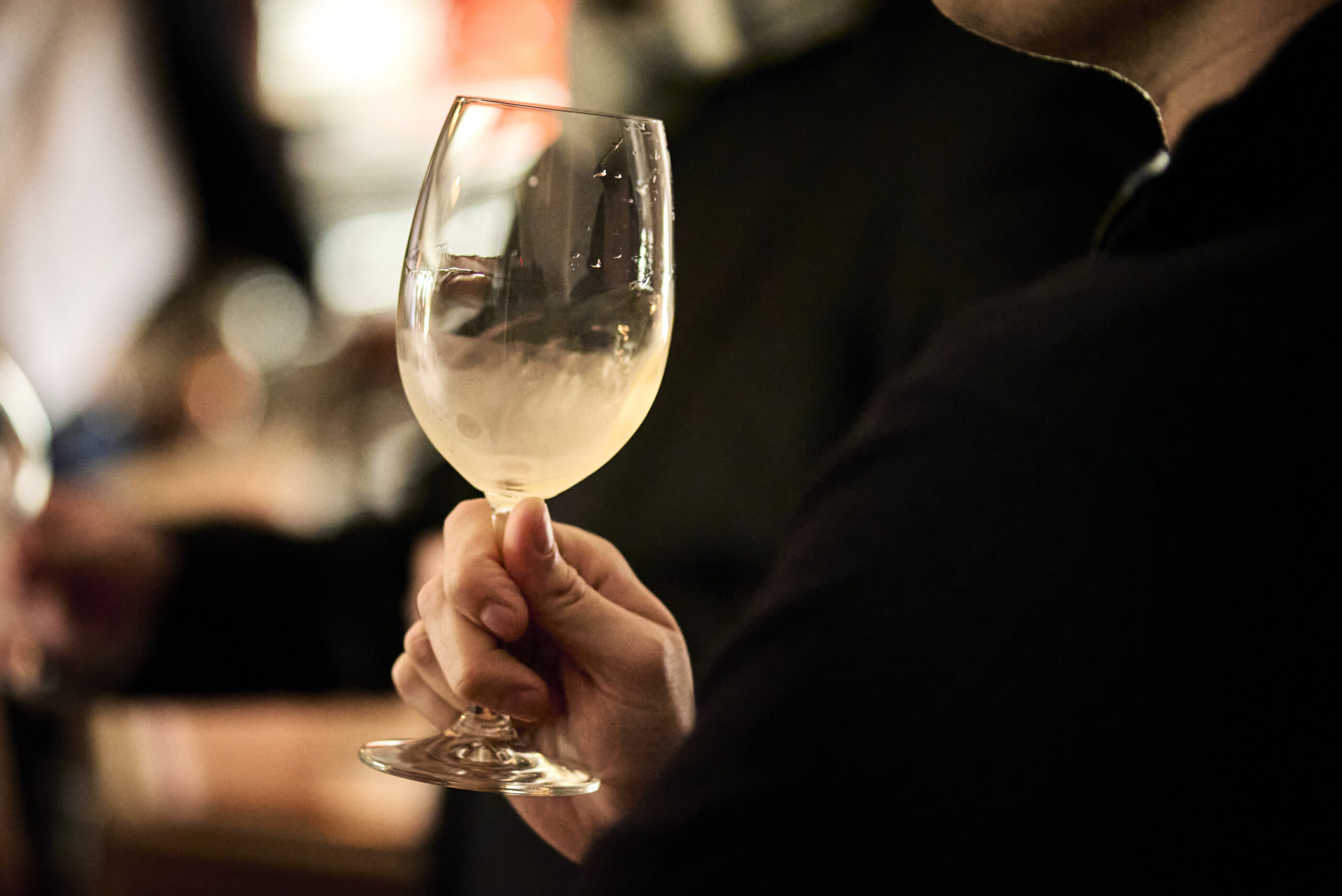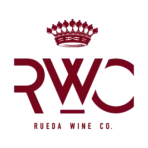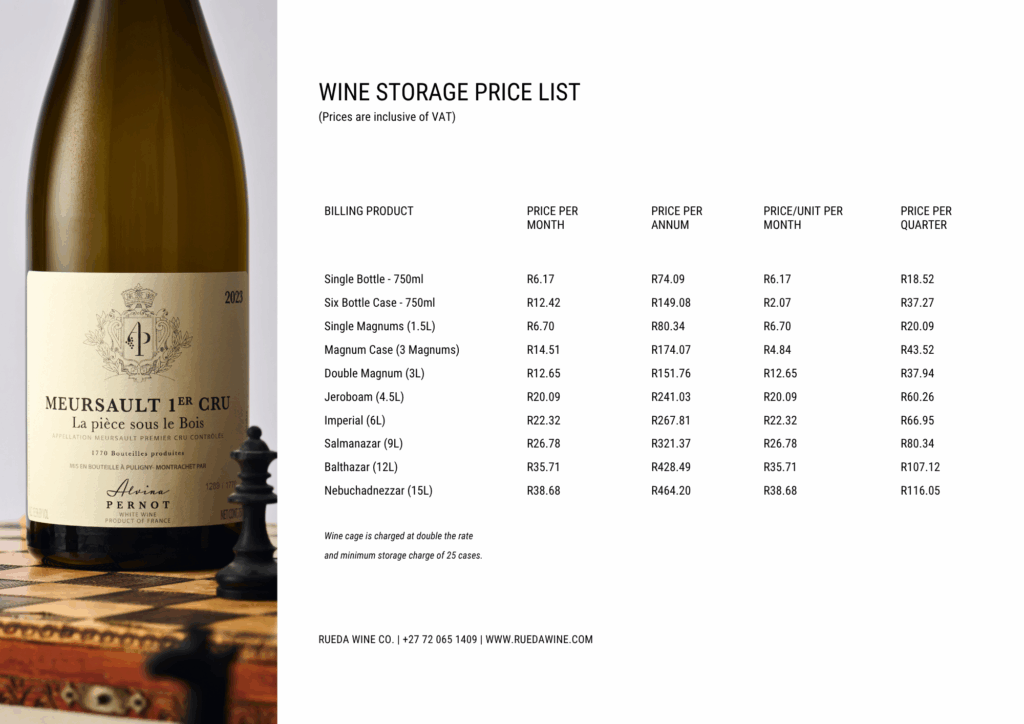
Mastering the art of wine tasting is a lifelong journey that marries sensory exploration with a deep appreciation for the subtleties of fine wine. At Rueda Wine Co., we understand that wine tasting is not merely about sipping and savouring. It is about consciously engaging with each aspect of the wine –sight, smell, and taste – to uncover the art within each bottle. Guided by the Wine & Spirit Education Trust (WSET) tasting grid principles, we offer expert tips to elevate your wine-tasting experience, whether you’re a novice or a seasoned enthusiast. This piece will delve into a systematic approach to wine tasting. We’ll also highlight some of our services, from curated wine boxes to personalised consultations, which can sharpen your skills and deepen your enjoyment. Join us as we explore the intricacies of wine tasting and how Rueda Wine Co. can help you master this refined art.

Basics of Wine Tasting
The Importance of Tasting Consciously
It’s our hope that by the end of this, you’ll feel more confident tasting wines you’ve ordered and commenting on them with your friends and family. Tasting wine consciously involves more than just taking a sip. It requires engaging all your senses to appreciate the wine’s complexities. You can uncover its unique characteristics by examining wine’s visual, olfactory, and gustatory aspects. Understanding each of these facets reveals clues about its origins and composition. The WSET tasting grid is an invaluable tool for this process. It’s a foundational guide that teaches tasters how to evaluate the wine’s appearance, aroma, and flavour profile. This renowned method ensures that you notice the subtleties. Purposefully tasting wine enhances your overall experience, making it richer and more rewarding. It allows you to appreciate the factors contributing to a wine’s quality, such as the grape variety, terroir, and winemaking techniques. Ultimately, this mindful approach transforms wine tasting from a simple activity into an enriching and enjoyable exploration.
WSET Wine Tasting Grid Overview
The WSET tasting grid is a framework that guides tasters through a comprehensive sensory evaluation of wine. It breaks down the tasting process into three primary categories: sight, smell, and taste. This organised approach ensures consistency and thoroughness in wine assessment.
Sight: Examine the wine’s colour, clarity, and viscosity. These visual cues can reveal the wine’s age, grape variety, and potential quality.
Smell: Swirl the wine and sniff deeply to identify its aromatic profile. Note the intensity, complexity, and specific aromas, ranging from fruity and floral to earthy and spicy.
Taste: Finally, take a sip and assess the wine’s flavour, sweetness, acidity, tannin, body, and finish. This step divulges the wine’s balance and overall structure.
You can then analyse and appreciate the nuanced elements of each wine, enhancing your overall tasting experience.
Step-by-Step Wine Tasting Process
Engaging in a step-by-step wine-tasting process allows you to assess and appreciate each aspect of the wine methodically. Here are some tips on how to do it:
1. Sight: Start by holding the glass at a slight angle against a white background to observe the wine’s colour and clarity. Wine shouldn’t be held up against a light, as this does not show the true colour of the wine. Note its hue, depth of colour, and any visible sediments. The wine’s appearance can indicate its age, whether deep purple, tawny, or brown. It can also divulge the grape variety. Cabernet Sauvignon is likely to have a more purple hue when young than Pinot Noir or Nebbiolo for example.
2. Smell: Gently swirl the wine in the glass to release its aromatic compounds. Take a deep sniff and identify the different aromas. Consider the intensity and complexity of the scents. Are you smelling only one thing or multiple? The scent may also have indicators of age and faults. Is it corked, oxidised, or mousey?
3. Taste: Take a small sip and let the wine coat your palate. Don’t be afraid to swirl the wine around your mouth, allowing the liquid to touch each part of your palate. This helps release more flavours. You can then assess sweetness, acidity, tannins, body, alcohol, and different flavours.
Evaluate its complexity and balance. Do all the different components work well together? Now, note the finish. This is the aftertaste and the length of time these flavours and aromas remain on your palate. Following this method ensures a thorough and mindful tasting experience, allowing you to fully appreciate and learn about the wine in question.
Pro Tip from Learn to Cook: Pairing Wine with Food
When learning about wine, it’s just as important to understand how wine pairs with food. The general rule of thumb is that white wines go well with lighter dishes like seafood and chicken, while red wines complement richer foods such as red meats and pasta with tomato sauce. However, exploring unique pairings—like a slightly sweet Riesling with spicy Asian cuisine or a bold Cabernet Sauvignon with aged cheese—can create exciting new flavors and enhance your overall tasting experience. Experimenting with food and wine pairings is one of the best ways to deepen your appreciation for both.
Crafting a Wine Tasting Note
Tasting notes are an important shorthand for flavours and aromas that allow you to identify attributes you value in a wine. They’re an important, but not exhaustive, guide directing you as you begin tasting. As you practice, you may begin to notice even more than the basic notes, and over time, you may wish to begin crafting your own specific descriptors to wine flavours and aromas.
Systematic Breakdown
Creating a comprehensive tasting note involves breaking down the wine’s characteristics. This process is crucial for documenting your impressions and comparing different wines. Here’s a guide to constructing your own tasting note:
1. Appearance: Note the wine’s colour, clarity, and viscosity. Mention any specific hues and whether the wine is clear, hazy, or opaque. Is there sediment? How much sediment? These observations can hint at the wine’s age and quality.
2. Nose: Describe the aromas detected when you smell the wine. Identify primary, secondary and tertiary aromas.
-
- Primary aromas relate to the grape itself, whether you scent fruity or floral flavours.
-
- Secondary aromas result from the winemaking processes. Techniques like lees stirring add yeasty notes like brioche, bread dough, or biscuits. In contrast, barrel-aged wine conveys hints of cut timber, cedar, burnt wood, or vanilla.
-
- Tertiary aromas are those that develop with ageing. These can be the scents of nuts, spice, the forest floor, mushrooms, or leather. As one develops their tasting skills, they may begin to ascertain whether the wine was oxidised, whether it was bottle aged, and what fruit flavours were sought during the winemaking process.
3. Palate: Detail the flavours experienced when tasting the wine. Note the wine’s sweetness, acidity, tannin, body, and alcohol level. Assess the wine’s balance and how these elements interact. Pay attention to its body, how rich or heavy the wine tastes, and its viscosity. Does it tend to water or syrup? When considering its sweetness, is it very dry, off-dry, or inclined towards sweet or luscious?
4. Conclusion: Summarise your overall impression of the wine. Note its complexity, quality, and potential for ageing. This systematic approach ensures a thorough and objective evaluation, making your tasting notes useful for future reference.
Significance of Tasting Notes
Tasting notes are more than just a record of your wine experience; they are invaluable for improving your wine knowledge and appreciation. By documenting your impressions, you create a personalised reference that helps you remember the nuances of each wine you taste. This is especially useful for comparing wines over time and across different vintages. Once you have this grounding, you may wish to start adding them to your profile in Wine-Searcher, Vivino or CellarTracker.
Tasting notes also enhance your ability to communicate about wine. They provide a structured way to share your observations with others, be it friends, fellow enthusiasts, or professionals. This shared vocabulary promotes discussion and deepens your understanding of wine.
Finally, tasting notes can guide future purchases. Reviewing past notes lets you identify patterns in your preferences and make more informed buying decisions. Whether you favour certain grape varieties, regions, or styles, your tasting notes offer valuable insights into your unique preferences. Tasting notes are essential for documenting, communicating, and refining your wine journey, making them a cornerstone of any wine enthusiast’s toolkit.
Enhancing Your Wine Tasting Skills
Rueda Wine Co. Offerings
Rueda Wine Co. is dedicated to elevating your wine-tasting experience through our range of specialised offerings. Our curated wine boxes are an excellent starting point, featuring a selection of rare and fine wines from renowned regions such as France, Italy, South Africa, Spain, and Switzerland. Each box is designed to expose you to various styles and flavours, enhancing your palate and knowledge.
For a more personalised experience, consider booking a consultation with one of our expert wine consultants. Our team can provide tailored advice, helping you refine your tasting skills and deepen your understanding of wine. Additionally, we host exclusive wine-tasting events that offer a unique opportunity to explore exceptional wines and learn from seasoned professionals.
Our offerings cater to novices and connoisseurs, ensuring every wine lover can find resources to enhance their skills and enjoyment. Subscribe to our newsletter to receive early invitations to Rueda Wine Co. dinners and tasting events and take your wine-tasting journey to the next level.
Booking Consultations
Booking a consultation with Rueda Wine Co. offers a personalised approach to refining your wine-tasting skills. Our expert consultants bring years of experience and deep knowledge of wine, guiding you and helping elevate your tasting abilities. During a consultation, you can expect a thorough exploration of various wine characteristics, from aroma and flavour profiles to the influences of terroir and winemaking techniques.
These one-on-one sessions are designed to address your specific interests and questions, making them ideal for both beginners and experts. Whether you’re looking to understand the nuances of South African wines or seeking advice on building a diverse wine collection, our consultants provide discerning insights and recommendations.
Booking a consultation is simple as we endeavour to accommodate your schedule and preferences. This personalised attention ensures you get the most out of the lesson. We facilitate furthering your wine education. Enjoy many world-class wines, making each session a valuable investment in your wine-tasting journey.
Exploring Wine Boxes
Rueda Wine Co.’s curated wine boxes are another excellent way to explore a diverse range of wines and enhance your tasting skills. Each box is meticulously selected to include exceptional wines from renowned regions like Burgundy, Champagne, Barolo, Tuscany, Stellenbosch, Swartland, and the Loire. These selections are designed to push you out of your comfort zone. You’ll be introduced to different styles, grape varieties, and terroirs, broadening your perception and deepening your understanding of wine.
Our wine boxes cater to various preferences and experience levels. Whether you’re a novice eager to learn or a trained palate hoping to discover rare gems, there’s a wine box for you. Each box has detailed tasting notes and background information, providing context that enriches your tasting experience.
Exploring these wine boxes allows you to experience a curated journey through the world of wine, offering both education and enjoyment. It’s a convenient and enriching way to expand your wine knowledge and refine your tasting skills, all from the comfort of your home.
We hope the lessons on tasting notes deepen your enjoyment and appreciation of wine. Whether you’re at the next Rueda event, a restaurant, or with dinner tonight, we trust these tips will make it a richer and more rewarding experience.
Written By: Rueda Wine Co. Staff Writer
Contributing Writer: Rhett Sinnema
Fact Checked By: Rhett Sinnema and Fernando Rueda
Edited By: Fernando Rueda

